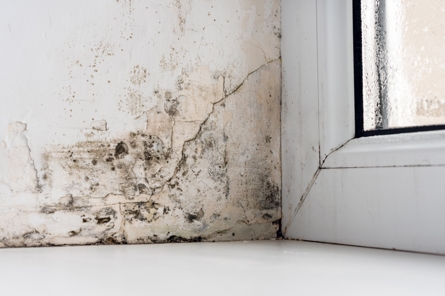Finding mold inside your home or commercial space is never fun. We bet many questions run through your mind, including, “How did this happen?" and “What do I do next?” It was probably nothing you did to cause the mold to grow. Believe it or not, all properties have some amount of mold lying in wait. The real issue is when indoor relative humidity (RH) reaches higher than 60%, causing mold to spread and grow.
The good news is that our Midland team can help remediate mold before it becomes a serious problem that affects your health and safety. Because we’ve been supporting home and business owners for so long, we’ve seen various mold types and can identify and clean them with no problem.
The 3 Most Common Mold Types We Clean
Let’s start by identifying the three most common mold types we see and remediate for our customers.
Aspergillus
Aspergillus is a common type of mold found indoors and outdoors. You can breathe in this mold type without getting sick. In fact, most people do so daily and don’t even know it. However, people with a weakened immune system may contract aspergillosis, a disease caused by Aspergillus. This disease can result in various symptoms, including sneezing, coughing, shortness of breath, and fever in rare cases.
If you’re worried that you may have this mold type in your home, there’s no need to collect a sample to identify it. The most important thing is to locate the moisture source and address it as soon as possible.
Cladosporium
Another common mold found indoors is Cladosporium, a fungus that may affect the health of those living with asthma. According to Healthline, Cladosporium isn’t typically harmful to humans but can cause allergy-like symptoms. Someone who is allergic to this kind of fungus may experience dry skin, watery eyes, runny nose, coughing, sneezing, etc.
You may find this mold type in carpets, hard flooring, drywall, fabrics, wood surfaces, ducts, window sills, and more. It grows most prominently in wet areas like bathrooms, basements, and attics. It appears white and fuzzy or fluffy.
Stachybotrys Chartarum or Black Mold
Most people are more familiar with black mold or Stachybotrys chartarum, one of the most common and dangerous mold types found in homes. Prolonged exposure to black mold can cause serious symptoms, including lightheadedness, sleeplessness, mental fatigue, memory loss, headache, and irritability. And while this mold type hasn’t been linked to any deadly diseases, it can exacerbate a preexisting condition and possibly lead to hospitalization.
Is DIY Mold Remediation Dangerous?
When you see mold inside your home, your first instinct is to remove it, right? However, this could prove more harmful than helpful. Using incorrect products and cleaning techniques could spread the mold instead of eliminating it.
For instance, we don’t recommend using bleach or harsh chemicals as a remediation tactic. Bleach is 90% water, which is mold’s best friend. Once the chlorine evaporates fairly quickly, water is left behind to seep deeper into porous surfaces and create the perfect environment for mold growth.
So, while remediating mold isn’t dangerous—per se—it can lead to mold growth if a professional doesn’t complete the process. That’s why hiring a mold remediation specialist adept at identifying mold types, locating the moisture source, and using techniques to remove mold thoroughly is important.
What To Do When You Find Mold On Your Property
Finding mold in or around your residential or commercial property can be devastating and nerve-racking. No one ever imagines they’ll be the victim of a mold infestation, but it can happen more often than not.
You don’t have to stress or address the problem yourself. It’s better to allow a certified and licensed professional to handle the job. Still, you can take a few actions to prepare your home or commercial space for a detailed mold inspection.
Don’t Disturb It
The worst thing you can do is disturb the mold, causing the spores to become airborne; this is how mold spreads. If you find mold, the best thing to do is leave it alone and isolate the area as much as possible. Additionally, keep everyone away from the area to reduce exposure.
Visually Assess
A mold removal company will first complete a thorough inspection of the affected area and see if the mold has infiltrated other parts of your property. Before a mold specialist arrives, you can do a visual assessment of the area and give the professional a better idea of what they might have to deal with. Providing input and noting all of the affected areas for your mold remediation expert can help the inspection go faster.
Remember, even a visual evaluation can expose you to mold spores. You should always wear protective gear like a face mask and goggles.
Call a Professional
Regardless of the amount of mold you find, you’ll want to hire a highly trained specialist to remove mold at the source and repair the cause of the moisture. Fortunately, ServiceMaster Restoration by FUSON is your local mold remediation and restoration provider, serving Midland residents with round-the-clock support.
Get in touch by calling (989) 200-5126 today or contacting us for more information about mold removal and mold damage restoration services.


